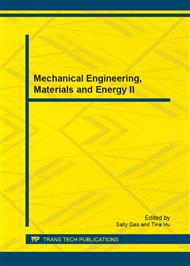p.417
p.422
p.426
p.430
p.436
p.441
p.448
p.453
p.457
Effect of Solid Solution Treatment on Fatigue Behavior of Cast Magnesium Alloy
Abstract:
The effects of solid solution treatment on high cycle fatigue behavior of cast magnesium alloy AZ91D were investigated using an up-and-down load method. High cycle fatigue tests were carried out up to 107cycles at a stress ratio R=0.1 and frequency of 90Hz on specimens using a high frequency fatigue machine. The results showed that the fatigue strength of cast AZ91D magnesium alloy increase from 54.5Mpa to 71.5Mpa after solid solution treatment (T4) at 415°C, keeping temperature 16hours. The micro-fatigue fracture surface of alloy included fatigue initiation area, fatigue crack propagation area and fatigue fracture area. Fatigue crack of the alloys initiate principally at inclusions and shrinks under subsurface. The fatigue fracture of test specimens show the rupture characteristics of quasi-cleavage(as-cast alloy) and toughness(T4 alloy), respectively.
Info:
Periodical:
Pages:
436-440
Citation:
Online since:
January 2013
Authors:
Price:
Сopyright:
© 2013 Trans Tech Publications Ltd. All Rights Reserved
Share:
Citation:


